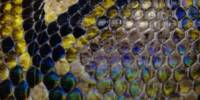Some evolutionary theories argue that creatures shrink over time, which can be explained by a concept known as “insular dwarfism” or “island dwarfism.” This phenomenon happens when organisms are confined on islands with limited resources and space, resulting in evolutionary pressures for reduced body sizes. A new study may have shed light on why Alaskan horses, cryptodiran turtles, and island reptiles shrank over time.
The new theoretical research indicates that animal growth over time is determined by two important ecological factors: the intensity of direct competition for resources between species and the danger of extinction in the environment. The study, published in Communications Biology, uses computer models to simulate evolution to explain why some species eventually shrink, as evidenced by fossil records.
Dr. Shovonlal Roy, an ecosystem modeller at the University of Reading who led the study, said, “Just like how we try to adapt to hot or cold weather depending on where we live, our research shows animal size can get bigger or smaller over long periods depending on the habitat or environment.”
In places and times where there’s lots of competition between different species for food and shelter, animal sizes often get smaller as the species spread out and adapt to the distribution of resources and competitors.
Dr. Shovonlal Roy
“In places and times where there’s lots of competition between different species for food and shelter, animal sizes often get smaller as the species spread out and adapt to the distribution of resources and competitors. For example, small horses that lived in Alaska during the Ice Age rapidly shrank due to changes in the climate and vegetation.
“Where direct competition is less, sizes tend to get bigger, even though being really big and few in number can make animals more vulnerable to dying out – such as what happened with the dinosaurs. Changes in ecological factors help explain why fossil records shows such confusing mixes of size evolution patterns, with some lineages shrinking over time and others growing.”

Cope’s rule
The research team conducted their investigation by confronting the discrepancies that fossil data presented to “Cope’s rule.” Cope’s rule describes the tendency of certain animal groupings to evolve greater body sizes over thousands and millions of years. The rule is named after Edward Cope, a nineteenth-century palaeontologist who is credited with discovering this pattern in the fossil record. For example, early horse ancestors were little dog-sized animals that grew in size throughout evolutionary time, eventually becoming the present horse. However, fossil data shows startlingly contradictory tendencies, with some groups increasing in size while others decreasing.
Evolutionary pressure
Using computer models simulating evolution, the study identified three distinct patterns of body-size change emerging under different conditions:
- Gradual size increase over time: This happens when competition between species is determined mostly by their relative body sizes rather than niche differences. For example, several genera of marine animal species (e.g. invertebrates) gradually increased in size over millions of years.
- Size increase followed by extinctions: Here, the largest animals become extinct on a regular basis, allowing other species to take their place and create even larger bodies, perpetuating the cycle. Large-bodied apex predators are particularly vulnerable to mass extinctions. Large mammals and birds, such as dinosaurs and enormous flying reptiles, are particularly vulnerable to extinction.
- Gradual size decrease over time: The simulations also indicated that species would diminish over time, which contradicted Cope’s rule. This occurs when there is considerable competition and some overlap in habitat and resource utilization. As species expand into discrete niches, they are under evolutionary pressure to limit their size. Vertebrates, bony fish, cryptodiran turtles, Alaskan Pleistocene horses, and island lizards have all shown size declines.
















